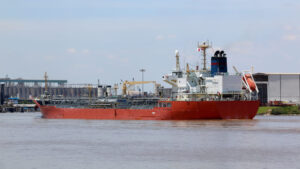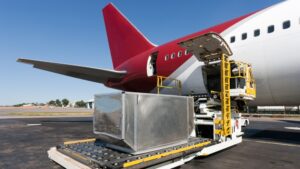
Section 307 of the Tariff Act prohibits importation of any items that were made, in whole or in part, with forced or indentured labor.
CBP enforces the law through issuance of Withhold Release orders that deny entry to shipments the agency believes have products or uses components made with forced labor.
Watch as George Thompson explains the far-reaching effects of Section 307 and what importers should do to identify the source of all content in the finished items that are presented to CBP for entry.
Transcript of Section 307 of the Tariff Act: What Does it Mean for Importers?
Hello, this is George Thompson, and today I’ll discuss Section 307 of the Tariff Act. This is the law that prohibits importation of any items that were made, in whole or in part, with forced or indentured labor. Its enforcement by Customs and Border Protection poses a difficult compliance challenge for importers.
CBP enforces the law through issuance of Withhold Release orders. Shipments that the agency believes have products made with forced labor are held, and not released for entry. The importer is given an opportunity to demonstrate that the goods are not prohibited but has the burden of proving they were not made using forced labor.
The wide scope of Section 307 was shown in CBP’s recent determination that Chinese manufacturer Hoshine Silicon used forced labor in its facilities in Xinjiang Province, China. Accordingly, CBP imposed a Withhold Release order on all products made by Hoshine and its subsidiaries. At a minimum, this means that end items produced by the company will be denied entry into the United States.
The prohibitions are more far-reaching than this, however, and this is where the broader compliance challenge arises. CBP’s order covers all products made by the company, anywhere in China, so it’s not limited only to those from Xinjiang Province, or to those actually made with forced labor.
It also applies to downstream articles made by third parties using Hoshine’s materials. Here’s where things get even more complex. CBP considers the exclusion to cover component materials like silicone, intermediate goods, like semiconductors, and finished products, which include, well, anything having content made from silicone. There is no “de minimis” cut-off, and the prohibition on importing is mandatory.
The challenge for importers, then, is to identify products that have, or may have, content originally made by Hoshine. Easier said than done, right, since the information may be inaccessible and Hoshine’s materials appear in many different downstream products.
There is no time cut-off, either, so previously-manufactured products with content produced by Hoshine are covered by the Withhold Release orders as well.
To deal with the Hoshine restrictions, as well as possible coverage of additional companies in the future, U.S. importers should require their suppliers to implement a supply chain trace process. The goal is to identify the source of all content in the finished items that are presented to CBP for entry.
Such information would let the importer know whether its products contain restricted content. It also enables the importer to challenge decisions by CBP to not release a shipment. Remember, if CBP withholds release, the burden falls on the importer to show why that decision was incorrect.
In short, the forced labor prohibition requires importers to implement a new compliance process. I’ll certainly keep you posted on how this plays out.
And, in our next video, coming up soon, we’ll discuss the recently-enacted Uyghur Forced Labor Prevention Act, which will make compliance on forced labor issues even more challenging than they are now.
Thompson & Associates, PLLC provides representation in all aspects of customs laws and regulations, specializing in export and import regulations and international business counseling. We can be reached at 202-772-2039 or online.








